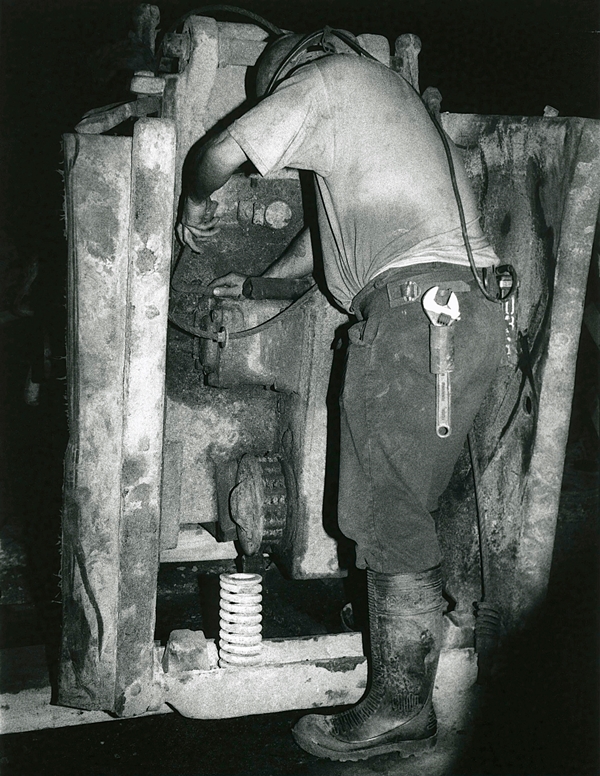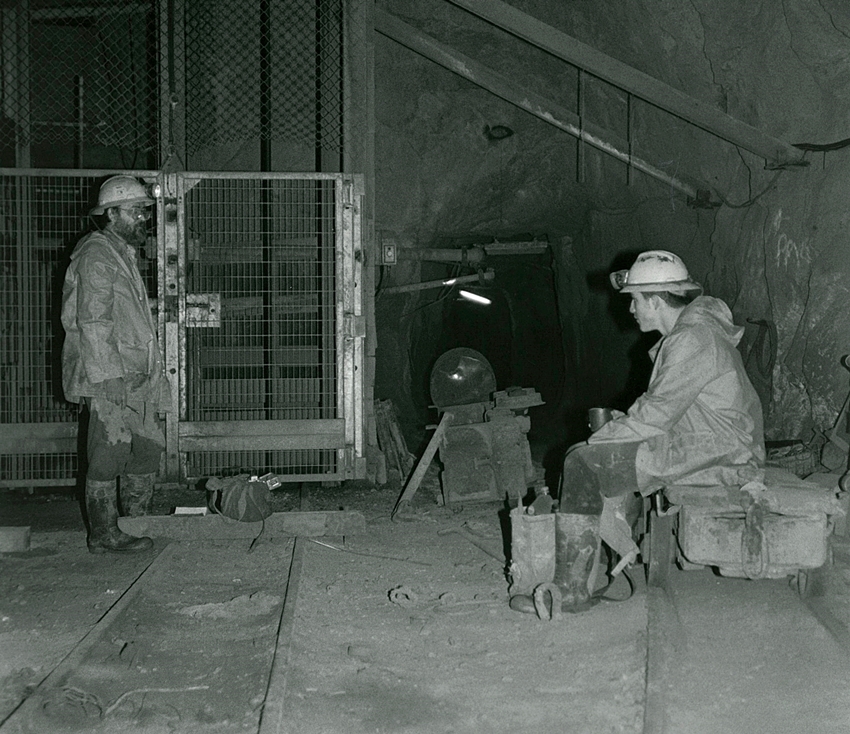South Crofty Mine Underground 19: This is the first of two pages which looks at the people of the mine. These miners that worked so far underground in the heat and the danger were the life blood of Cornwall. Keeping alive a tradition that was 100’s of years old.
It was always difficult to capture images of the miners faces without getting in the way. Trying to be unobtrusive in such a confined atmosphere was almost impossible. However the fact that I did not get in the way, or stopped men working meant I could get many unique images.




During my visites I came across the same miners time and time again. Many of the images on this page are of Cleve Williams, he always had a smile ready and never minded the camera.





The next few images are of Mike Clothier Head of the Ventilation Department and James Pettett. This had been a epic trip, we had been underground virtually all day and covered a lot of ground. We started at 145 Fathom climbing down to 260 Fathom Level on the ladders. Along with a hell of a lot of walking.

James Pettett has kindly written a few lines about his role at South Crofty:
The ventilation was critical to operation of the mine, as it was the only way out for gases and dust. This included the post blasting fumes and radon. Consequently we had to make sure that the system was performing and how changes to the mine would affect it. The air was directed using doors. These would ultimately force the fresh air to go the long way round or down to the return shaft, Roskear or Taylor’s.

My job was to monitor and record the system, by checking airflow quantities and temperature in the airways and also recording conditions in the working areas, especially some of the development ends. This information could then be used in planning and cost projections. I would also carry out a full ventilation survey once per month on each of the levels from 290 to 445 (I never did work out how many km’s that was).
So, most months I’d start at the top and work my way down a level per day. We’d also look at any door repairs needed and we would typically visit an old working once a month, where I would go with Mike Clothier and occasionally bring in others if the area was really dodgy or poorly mapped. I would also cover for Mike in radon measurements and ran a dust sampling programme.


My thanks go to Keith Russ for some more information on Mine Ventilation.
During the last working years of the mine, Roskear was upcast as was Taylors – Only Cooks and Robinsons Shafts were downcast. The Ventilation Department had several tasks. The velocity and quantity of air were measured at fixed points throughout the mine. A vane anemometer was used to measure the flow, the temperature both dry and wet bulb were also measured too.
Again the radon was measured at fixed locations at regular intervals maybe once a month, it was usual for the ventilation dept, to measure both airflow and radon at the same time. Much effort was spent in tracing the flow of air round the mine, especially in connection with old workings which were a source of radon, and leakage of air.




To me this next image captures the character of the men who worked at South Crofty Mine. The fog produced by the drills was known by the miners as funk, hence the phrase “Lets get funky” that was often used underground.

The next three images are of South Crofty Miner Cleve Williams, and are worthy of mention. A powerful image of a proud man, an amazing addition to this page. These was taken just a few months before closure, on one of my last trips into the mine. Most probably one of the best underground portrait shots I have taken. Cleve sadly passed away in October 2015, I had hoped to meet him again at a Miner’s Reunion soon after. RIP Cleve.





